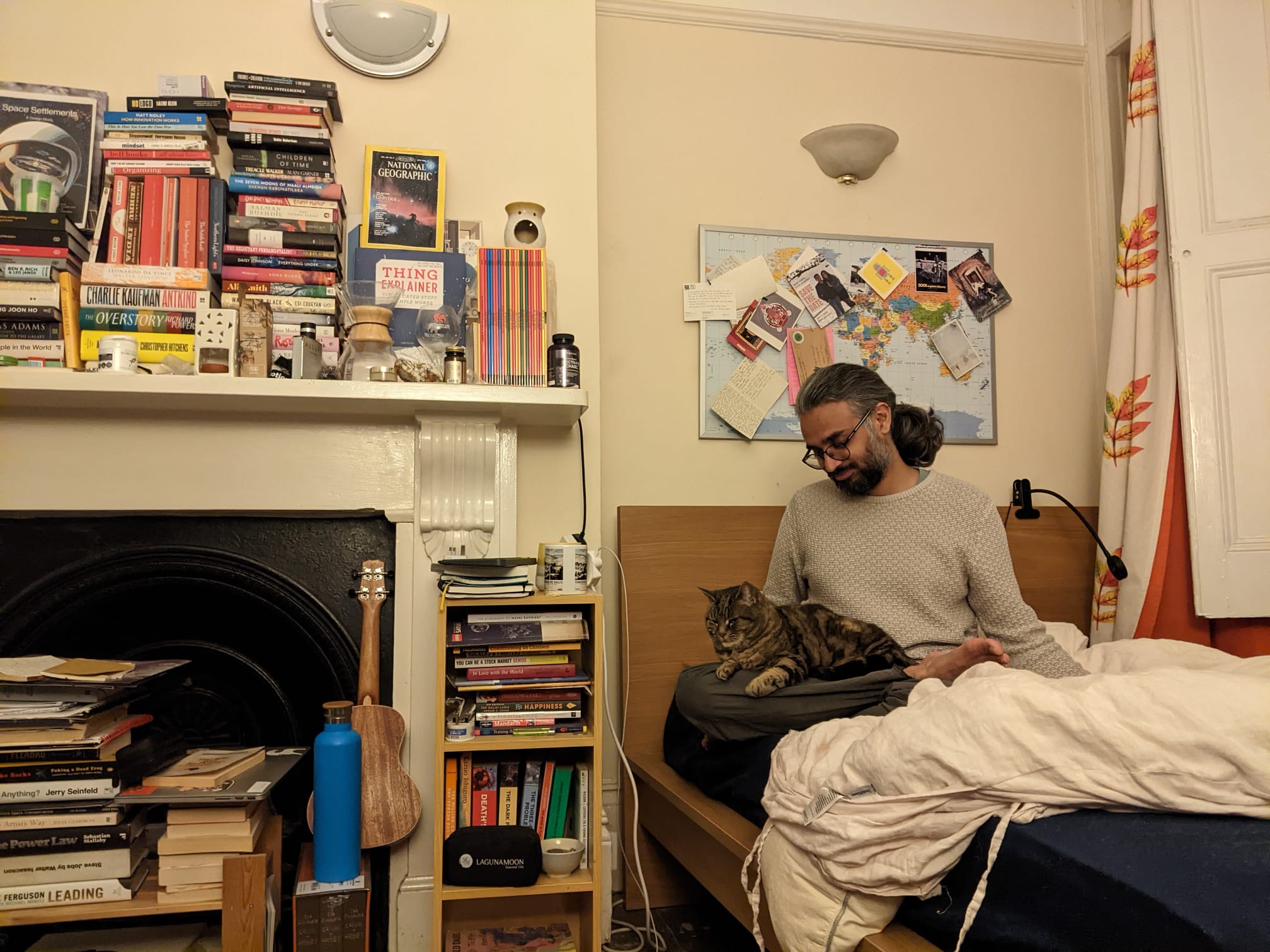About Me

I am a Lecturer in Spacecraft Engineering at Queen Mary University of London in the UK My QMUL page . Since becoming a permanent academic Essentially this is like being on the tenure-track in the US despite the UK no longer having the formal concept of tenure. in 2020, I have attempted to traverse the twofold research and education landscape with a practice that (I think) demonstrates more thoughtful and technically relevant engagement with academic systems and processes.
I believe adopting technologically current tools and methods for generating knowledge and distributing information is personally meaningful and, in the long run, can be impactful. I do not find comfort in the idea that metrics and awards suitably measure our achievements or ambitions. Despite being difficult to measure, that sense of meaning is what I incentivises my behaviours and therefore what I am maximising for in almost all parts of my life.
Career Trajectory
My academic focus on engineering dynamics (variable mass and multibody dynamics) and its effective written communication was honed under the mentorship of the late Prof. Fidels O. EkeHis UC Davis obituary , a truly extraordinary scholar and gentleman. As I neared the completion of my PhD with him, I was fortunate to receive UC Davis’ Drake Fellowship that allowed me to spend a year at the NASA Jet Propulsion Laboratory’s DARTSLab under Dr. Abhi Jain, where his group developed robotic software (building on his fundamental contributions to computational/algorithmic multi-body robot dynamics) relevant to various orbital and planetary surfaces missions at NASA. I also owe a debt of gratitude to Prof. Stephen Robinson—a former NASA astronaut and then Head of the Mechanical and Aerospace Engineering Department—for generously providing a modest top-up to the Drake stipend, which enabled the year in Pasadena.
After this, I held a postdoctoral appointment at the Surrey Space Centre, where I led research for SSTL and Airbus into mission architectures and technology roadmaps for robotic in-space assembly. This work involved both systems-level studies and the development of lab-based technology demonstration testbeds. My worldview was again expanded under the mentorship of Prof. Craig Underwood, whose encyclopaedic knowledge of space missions—and deep understanding of spacecraft subsystems—embodied the ethos of a proper space engineer.
These experiences and mentors drew me into working across the breadth of space engineering. At QMUL, my group now explores a range of futuristic space systems and technologies—spanning from prototyping novel robotic debris-capture mechanisms to developing foundational simulation tools grounded in core engineering science.
Since late 2024,I’ve also been thinking more deeply about von Braun Wheels and how inflatables might be essential to enabling the [[ Spaceship-1|next generation of spaceships ]].

My Research and Pedagogic Philosophy
My approach to personal learning and pedagogic growth bears some parallels to Papert’s constructivist philosophy. My interpretation of this is that intuition and interest come from experimenting with new and previously unknown interactive tools, much like a child playing with an ever-expanding collection of toys, to build a model of their world. I believe this leads to one eventually uncoveringIn some cases, even discovering. their interests, an important precursor to developing taste.
I am wrote the above while reflecting on the efforts of some extraordinary students who, over the Summer of 2024, collectively created an online textbook on Spacecraft Dynamics1 based on earlier handwritten lecture notes.
In teaching, I place a strong emphasis on exploration-based learning. This often runs counter to formal academic structures that prioritise examinations and assessments, but I try to work within those constraints where possible. The consequences of neglecting exploration are visible in today’s STEM research culture, where group leaders often chase productivity metrics—such as publication counts and citation indices—as ends in themselvesGoodhart’s law is instructive here: when a measure becomes a target, it ceases to be a good measure. My concern is that such metrics fail to capture what may be academia’s most useful output: a critical and independent thinker. Of course, this presumes students are thirsty for knowledge but also willing to think differently from the herd. . As a result, much of today’s professoriate risks becoming little more than academic philatelists2.
A more constructive path, I believe, lies in rethinking—or at least clarifying—our incentive structures. If a funder wants only journal papers, they should say so explicitly. Likewise, universities should meaningfully reward contributions such as well-documented tools and high-quality datasets—outputs that are often more durable and impactful than yet another paper in an already saturated literature.
-
The students built on prior introductory knowledge of Python (nothing fancy), \(\LaTeX\), and Markdown but more importantly some of them learned how reviewing pull requests works. Some of them were able to teach their friends- via videos and remote pair programming- how to make contributions without my direct supervision. In the process, this team also taught me about sensibly coordinating a larger Github project while flying by the seat of my pants. I would like to think that we all grew a bit- I did! ↩
-
At some point I’ll need to expand on this. I do value documentation and consider it inherently valuable in STEM. But what matters more is cultivating a culture where scientists care about high-quality written communication—not just volume. Perverse metrics drive perverse behaviour. ↩